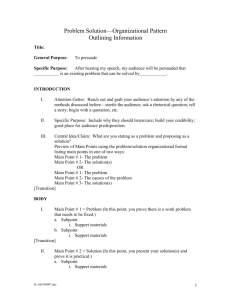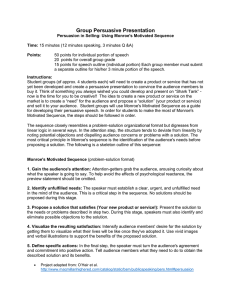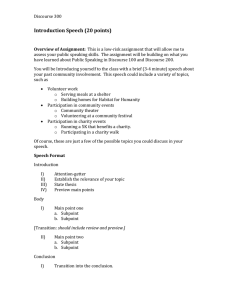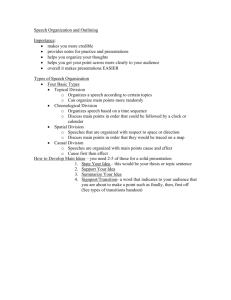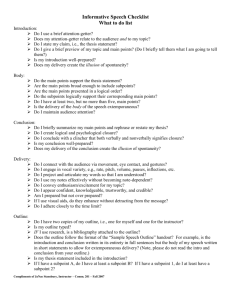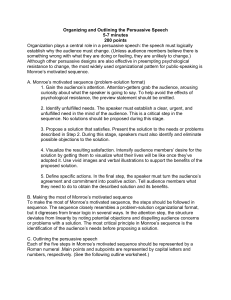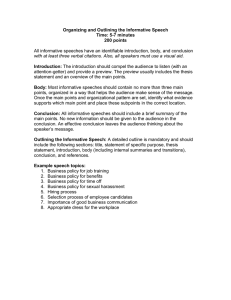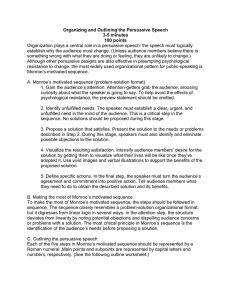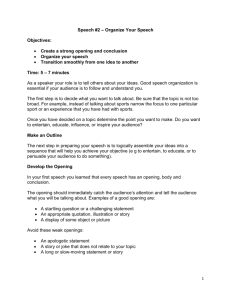Organizing and Outlining the Persuasive Speech 5-7 minutes 100 points
advertisement
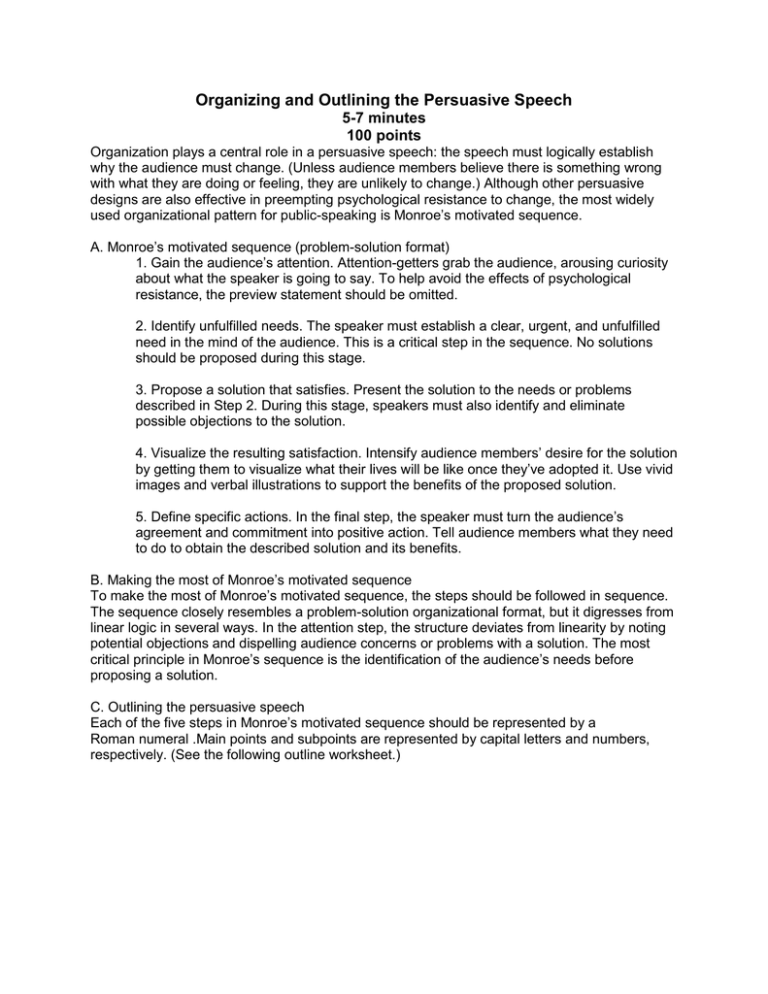
Organizing and Outlining the Persuasive Speech 5-7 minutes 100 points Organization plays a central role in a persuasive speech: the speech must logically establish why the audience must change. (Unless audience members believe there is something wrong with what they are doing or feeling, they are unlikely to change.) Although other persuasive designs are also effective in preempting psychological resistance to change, the most widely used organizational pattern for public-speaking is Monroe’s motivated sequence. A. Monroe’s motivated sequence (problem-solution format) 1. Gain the audience’s attention. Attention-getters grab the audience, arousing curiosity about what the speaker is going to say. To help avoid the effects of psychological resistance, the preview statement should be omitted. 2. Identify unfulfilled needs. The speaker must establish a clear, urgent, and unfulfilled need in the mind of the audience. This is a critical step in the sequence. No solutions should be proposed during this stage. 3. Propose a solution that satisfies. Present the solution to the needs or problems described in Step 2. During this stage, speakers must also identify and eliminate possible objections to the solution. 4. Visualize the resulting satisfaction. Intensify audience members’ desire for the solution by getting them to visualize what their lives will be like once they’ve adopted it. Use vivid images and verbal illustrations to support the benefits of the proposed solution. 5. Define specific actions. In the final step, the speaker must turn the audience’s agreement and commitment into positive action. Tell audience members what they need to do to obtain the described solution and its benefits. B. Making the most of Monroe’s motivated sequence To make the most of Monroe’s motivated sequence, the steps should be followed in sequence. The sequence closely resembles a problem-solution organizational format, but it digresses from linear logic in several ways. In the attention step, the structure deviates from linearity by noting potential objections and dispelling audience concerns or problems with a solution. The most critical principle in Monroe’s sequence is the identification of the audience’s needs before proposing a solution. C. Outlining the persuasive speech Each of the five steps in Monroe’s motivated sequence should be represented by a Roman numeral .Main points and subpoints are represented by capital letters and numbers, respectively. (See the following outline worksheet.) Outline Worksheet for Monroe’s Motivated Sequence Persuasive Speech Title: Speaker: Specific Purpose: I. Introduction A. Attention-getter: B. Establishment of ethos: (Transition) II. Need A. Main idea 1 with supporting material (such as a statistic or quotation) 1. Subpoint (optional) 2. Subpoint (optional) B. Main idea 2 with supporting material 1. Subpoint (optional) 2. Subpoint (optional) (Internal summary) (Transition) III. Satisfaction A. Main idea 3 with supporting material 1. Subpoint (optional) 2. Subpoint (optional) B. Main idea 4 with supporting material 1. Subpoint (optional) 2. Subpoint (optional) (Internal summary) (Transition) IV. Visualization A. Main idea 5 with supporting material 1. Subpoint (optional) 2. Subpoint (optional) B. Main idea 6 with supporting material 1. Subpoint (optional) 2. Subpoint (optional) (Internal summary) (Transition to conclusion) V. Action A. Summarize and review taking action (overall theme including each step of Monroe’s motivated sequence) B. Tie to the introduction C. Creative concluding thought (end with impact) References
